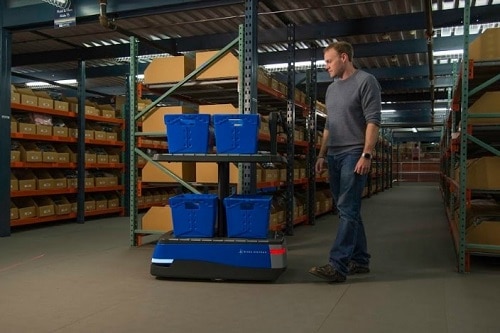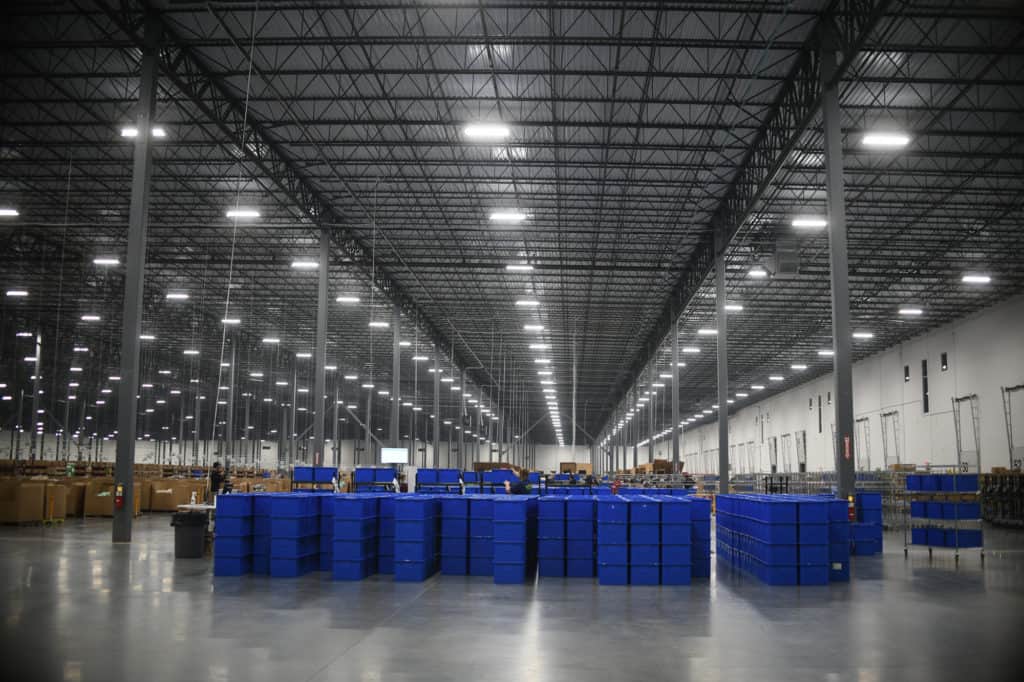Much like a body part dies off without regular blood supply, the part of the business that is not properly served by the supply chain also dies off. The supply chain is a network of different companies, each serving a different function. The companies networked in a supply chain have a cross-functional relationship between vendors, suppliers and customers, and improving supply chain management requires nurturing these relationships and making smart investments in people, processes, and technology.
The supply chain is one area of any business that can be optimized for maximum efficiency and cost savings, but it is often overlooked. In many cases, it is the function that is evaluated to bring about short term cost reductions without a proper outlook for the future. An effective supply chain strategy reduces costs for the business while also ensuring long-term customer satisfaction.
According to a report by Deloitte, 79% of the businesses with high-performing supply chains experience higher growth rates than their industry peers, while only 8% of the companies with sub-optimal supply chains report above-average growth. It is evident that having a high-performing supply chain can be the harbinger to the upward trajectory of a business. 57% of businesses believe that supply chain management brings a competitive advantage to their company. This comprehensive guide to improving supply chain management covers the essential components of a high-performing supply chain:
- Demand planning
- Analytics and big data initiatives
- Software tailored for the sector
- Automated warehouses and distribution centers
- Investments in partnership enhancement
- Monitoring KPIs
- Just-in-time inventory
- Standardization
- Integrated sales, marketing, and finance
- Investments in people
Demand planning

When there is not enough supply of a product to meet the demand for it, the business is losing potential sales. There is also the possibility that customers may switch to competing products. On the other hand, if there is an excess of supply compared to the demand, the business has to bear inventory costs and other overhead costs to store and manage the unsold goods, which also affects the profitability of the business. It is a crucial step in supply chain management to estimate the demand for the product as accurately as possible. 36% of supply chain executives acknowledge that balancing supply and demand and managing inventory accordingly is the top priority for them.
Demand planning cannot be undertaken by the supply chain acting as a silo. Input from the marketing and sales departments is crucial to estimating future demand accurately. POS sales data provides a well-defined picture of the past demand for a product. Statistical tools and software can be used to estimate future demand reliably. Input from the sales and marketing teams shed light on potential changes in trends due to the current and future planned initiatives of their respective departments, as well as other externalities like macroeconomic factors.
Analytics and big data initiatives

Data is a powerful tool in the 21st century. Analytics can help an organization make smarter, faster and more efficient decisions. According to Gartner, 29% of companies report achieving a high return on investment from analytics investments in the supply chain. Only 4% of the companies did not report any return on their investment after implementing analytics. Data can be utilized to better understand risks in operations and increase accuracy in both demand planning and supply planning.
Analytics can also be utilized to identify bloats and bottlenecks in a supply chain and optimize those problem areas for a leaner supply chain, reducing costs and improving agility and flexibility. With the use of effective analytics tools, supply chain professionals can create a dynamic model that can provide more accurate forecasts in real-time with changing parameters. It can also be altered to provide information on the best actions to take in different possible scenarios. Analytics tools are easier than ever to acquire and implementing such solutions costs just a fraction of what it cost to implement similar capabilities in the past.
Software tailored to the sector

Software solutions tailored to the needs of the supply chain sector, such as Enterprise Resource Planning (ERP) software, are useful for tying different parts of the company together. ERP solutions can also support collaboration between companies. The most commonly used ERP software is generic and can be applied to practically any industry with minimal to no customization. However, generic ERP software fails to grasp and contain the nuances of different industries. For example, the needs of a toy manufacturer are different from the needs of a pharmaceutical company. Toys tend to have higher seasonal demand, such as spikes in demand during the holiday shopping season, while pharmaceuticals have relatively consistent demand throughout the year. These variances exist across industries, from food and beverages to electronics, automotive, cosmetics and others.
Even within each industry, the needs of different companies vary. Many factors like size, geography, customers served, etc. are distinct for companies in the same industry. The best approach for supply chain organizations is to build software that is tailored to your company’s unique needs. However, custom software development might be cost-prohibitive for small and mid-size companies. In such scenarios, you can resort to software that is optimized for your industry. Use vendors and software providers with experience in your industry and a focus on developing solutions that meet your industry’s biggest challenges.
Automated warehouses and distribution centers

Order picking is one of the most crucial activities in a warehouse, accounting for 55% of operations costs, but it’s also a function that’s prone to human error. Many warehouses are turning to automation to fully optimize warehouse picking, replenishment and other core warehouse activities.
Amazon was a pioneer in warehouse automation. Now the technology and know-how are within reach for any business. There are many automation solutions available in the market, and warehouse operators should identify and implement the solution that best suits the needs and existing infrastructure of the warehouse. The upfront cost can be a deterrent for some forms of automation, but flexible automation solutions like collaborative mobile robots are a cost-effective solution that requires no changes to a warehouse’s existing infrastructure and allows for rapid implementation and ROI. Supply chain organizations should focus on both short- and long-term benefits when selecting the right warehouse automation solution for their operations. Warehouse automation is one of those technologies that will be ubiquitous in the future, and early adopters will grow leaps and bounds over their competitors.
Investments in partnership enhancement

A supply chain operates smoothly with the cooperation of all the stakeholders. The health of its suppliers, vendors, manufacturing partners and distribution partners is crucial for the sustenance of the company. Taking this into consideration, you must invest in ensuring your partners are in robust shape.
The primary consideration is fostering transparency with stakeholders. Your stakeholders are dependent on you as much as you are dependent on them and having open communication with stakeholders helps to strengthen partnerships. The ERP systems used by your company and other stakeholders must be compatible with each other to ensure seamless data exchange between partners.
When implementing a new plan or strategy, seeking the input of partners is important to ensure that they are on board with the changes. It is also possible that partners can offer advice on better strategies due to their expertise in specific domains.
Monitoring KPIs
Lasting improvements cannot happen without measurement. First, there needs to be a metric to improve. Attempting improvement without establishing goals and parameters is similar to sailing without a rudder. The most commonly used KPIs (key performance indicators) in the supply chain are daily performance, cost reduction, production service rate, inventory turn, production time, lead time, return rate and ROA.
There is no need to rely on the same KPIs other companies use. Each company has specific areas of focus, bottlenecks, and other issues that determine the metrics that should be improved, although comparing KPIs against industry benchmarks can be helpful to determine areas for improvement. The reason to use KPIs is to get a precise and concise snapshot of the operations and particular care must be taken to ensure that there are no blind spots with the chosen set of KPIs. The KPIs you monitor should also make it easier to track and identify problems so you can take swift action to resolve issues before they cause major disruption.
Just-in-time inventory

Just-in-time (JIT) started as a manufacturing technique in Toyota plants. But this principle can be applied across the entire supply chain, not just the manufacturing leg of it. In theory, just-in-time is where a material or product arrives just when it is needed. When it is applied to the supply chain, it translates to products reaching just in time to meet demand, which helps reduce inventory cost and other overhead costs significantly.
The key to implementing the just-in-time principle in the supply chain is to have all the stakeholders working together. ERP systems in the market are perfectly capable of working with just-in-time manufacturing and JIT inventory management to reduce inventory costs and inventory turnover. Implementing JIT principles will ensure the supply chain is lean and performs at peak efficiency.
Standardization
Standardization goes hand in hand with a large-scale operation. It reduces complexity and confusion. Standardization has to be implemented in two spheres: processes and products. The standardization process helps streamline operations to achieve higher efficiency. It also makes interactions with suppliers and other stakeholders simple and easy to handle. There is a downside to this, however. The agility of the supply chain can be much lower when processes are standardized, as the organization will be entrenched in the standard operating procedure, and it can be difficult to change the course. Finding the right balance of standardization with the flexibility needed to support agile operations is key.
Standardizing products is also conducive to higher operational efficiencies. Consider the mobile operations of a company like Apple, which has a very small number of SKUs compared to the mobile division of Samsung, which tries to accommodate every niche in the market. The operational profits of Apple are higher than its competitors. On the logistics side, having standardized products makes implementing automation easier. This form of standardization may not work for every company. For some businesses, having a diverse range of products available to consumers is their competitive advantage, such as in the fashion industry. Therefore, standardization of products should only be implemented if such measures do not negatively affect the company’s competitive advantage.
Integrated sales, marketing, and finance
The supply chain function of an organization works in conjunction with sales, marketing, operations and finance departments, as well as its various stakeholders. We saw earlier how input from sales and marketing departments is critical to demand planning. The finance department has to approve expenses for warehouse automation or other investments to improve logistics. Finance departments, in general, focus on reducing the costs in the short term, so it’s worth getting the finance department on board with an understanding of the long-term benefits of costs incurred now, such as gains in productivity and optimized labor costs. Long-standing collaborative partnerships with other departments make the general operations of the company smoother.
It is not a one-way street. Other departments are also reliant on the supply chain. Sales and marketing teams have to ensure the capability of the supply chain to handle a new product line or expansion into new geographic markets. If the supply chain cannot deliver the promises made by marketing and sales, it can lead to losses and reputation damage for the company. Likewise, supply chain capabilities will also affect the profitability of a new product that has incurred substantial costs in research & development and marketing. All company departments should act symbiotically. Due to the characteristics of the supply chain, it is an ideal node of the symbiotic relationship between the departments in the organization. With the use of modern technology, it’s easy to keep the communication channels between departments open to relay data and ideas.
Investments in people

The supply chain is heavily reliant on the people it employs, so a successful supply chain requires qualified and well-trained employees, including exceptional supply chain executives. Efforts must focus not only on attracting and retaining employees but also on training employees in new technologies and emerging techniques. There are only rare instances in which a hired employee is fit for the job right on day one. Employee development should be a priority in efforts to improve the supply chain.
An important yet difficult task that helps to foster employee creativity is building an open environment in which employees do not feel reprimanded for sharing their input. When employees feel valued, they will provide creative solutions for problems. Employers should also encourage employees to learn new skills, which is beneficial to both the employee and the employer.
It’s also worth investigating whether partners’ and suppliers’ employees are well taken care of. Though they are not directly on your payroll, indirectly they are working for you. They have an impact on your bottom line and the success of your operation. A company must invest time to explore the employment practices of its suppliers; otherwise, your company may face backlash if the public uncovers information about the poor treatment of employees at companies you partner with. For instance, if a company employs a sweatshop to manufacture products — even if they’re unaware that their partner’s employees are treated poorly or paid unacceptably low wages — the company may face substantial backlash and reputation damage if their partner’s practices become publicly known, something that has impacted major brands like Nike, Adidas and Apple.
Wrapping up
A great number of supply chain improvements can be made in a short time, even in complex industries. The points mentioned here are not complex techniques that require years of planning, although long-term outlook is certainly required. A company that focuses on the short term is at risk of losing its place on the map and may gradually become irrelevant.
Implementing modern technology is one of the most effective ways to improve any supply chain. An ERP solution can be implemented in a very short period of time with a return on investment. Investing in smart automation solutions for warehouses and distribution centers that can be brought online quickly for a faster ROI, such as collaborative mobile robots, helps companies minimize upfront investment costs while reaping the long-term benefits of flexibility and efficiency. Investing in people is never a bad idea, not just in the supply chain but for every department and every industry. A well-oiled supply chain is a profit center for any business.
Download our white paper, The Business Case for Collaborative Mobile Robotics, to learn more about how collaborative robots can help you transform fulfillment with the flexibility to meet demand and reduce costs.


